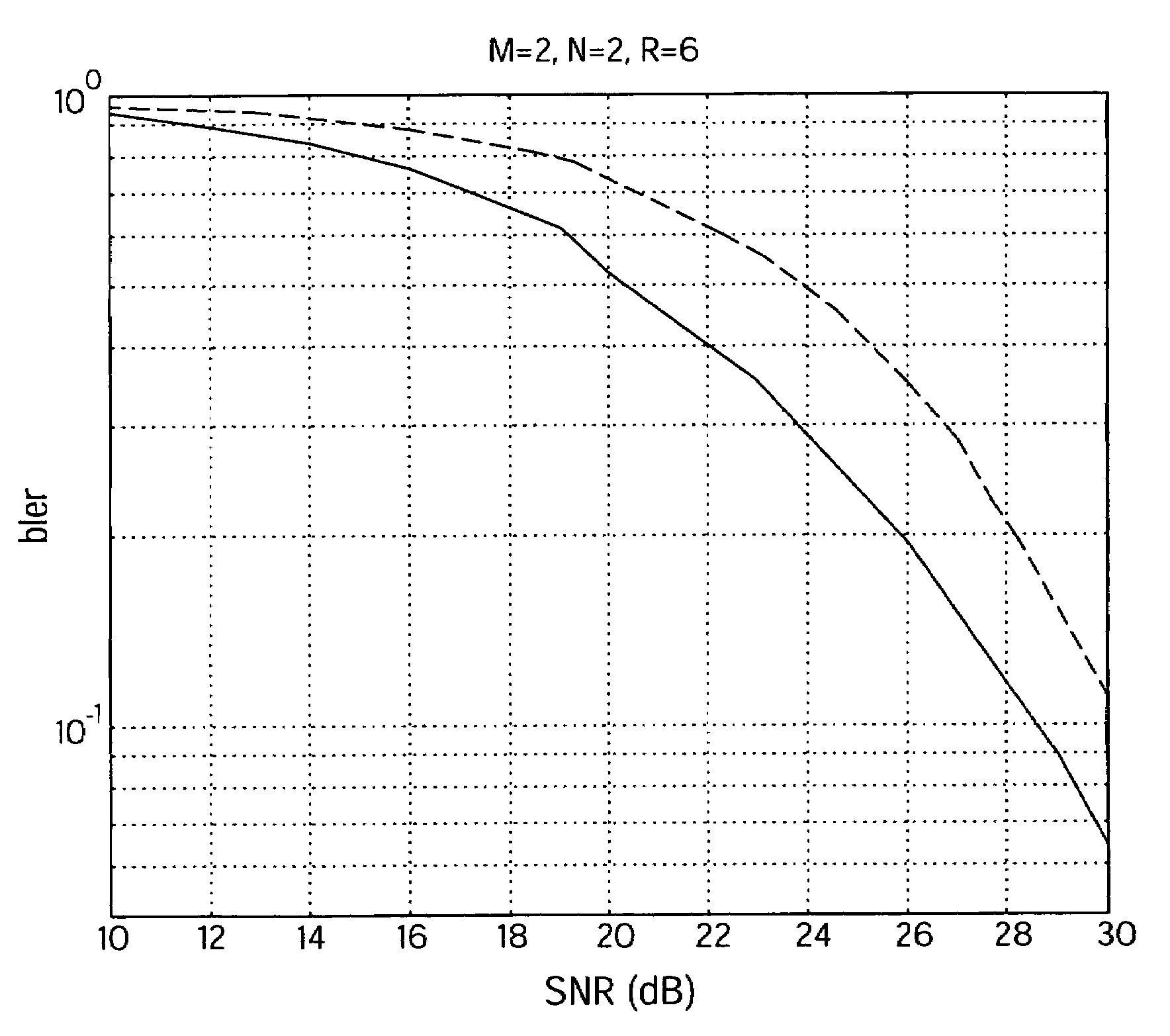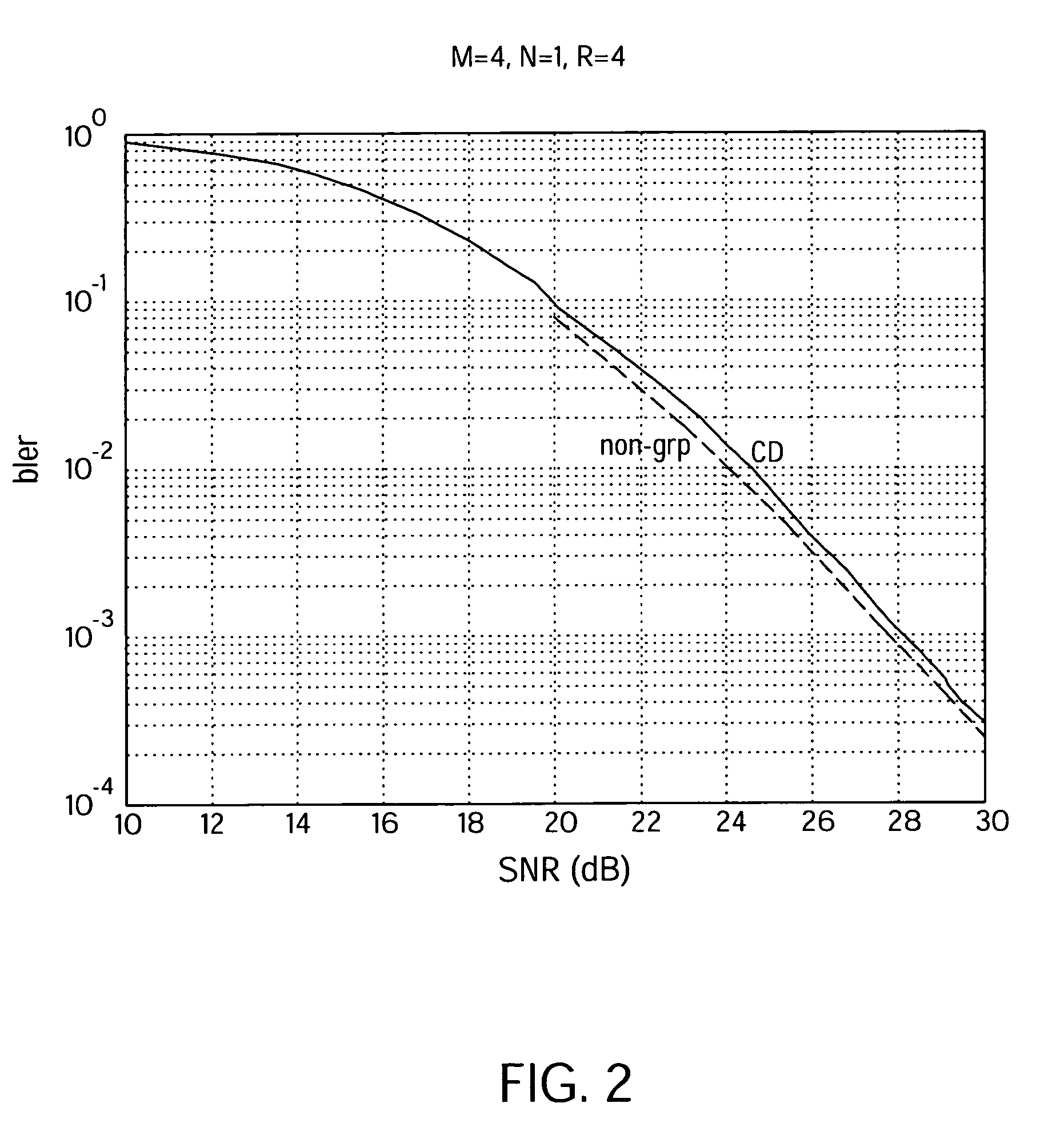Cayley-encodation of unitary matrices for differential communication
a differential communication and cayley-encodation technology, applied in the field of communication, can solve the problems of not always feasible or advantageous to use training-based schemes, channel changes very rapidly, and the uncertainty of what technologies will achieve this goal, and achieve the effect of maximizing the expected distan
- Summary
- Abstract
- Description
- Claims
- Application Information
AI Technical Summary
Benefits of technology
Problems solved by technology
Method used
Image
Examples
example simulations
[0130 for the performance of CD codes for various numbers of antennas and rates follow. The channel is assumed to be quasi-static, where the fading matrix between the transmitter and receiver is constant (but unknown) between two successive channel uses. Two error events of interest include block errors, which correspond to errors in decoding the M×M matrices V1, . . . , VL, and bit errors, which correspond to errors in decoding α1, . . . αQ. The bits to be transmitted are mapped to αq with a gray code and therefore a block error will correspond to only a few bit errors. In some examples, we compare the performance of linearized likelihood (sphere decoding) with true maximum likelihood and nulling / cancelling.
[0131]8.1. Simple example: M=2, R=1
[0132]For M=2 transmit antennas and rate R=1, the set has L=4 elements. In this case, it turns out that no set can have ζ, defined as
[0133]ϛ=12minl≠l′det(Vl-Vl′)1M,
larger than ζ=√{square root over (⅔)}=0.8165. The optimal set corresponds to ...
PUM
 Login to View More
Login to View More Abstract
Description
Claims
Application Information
 Login to View More
Login to View More - R&D
- Intellectual Property
- Life Sciences
- Materials
- Tech Scout
- Unparalleled Data Quality
- Higher Quality Content
- 60% Fewer Hallucinations
Browse by: Latest US Patents, China's latest patents, Technical Efficacy Thesaurus, Application Domain, Technology Topic, Popular Technical Reports.
© 2025 PatSnap. All rights reserved.Legal|Privacy policy|Modern Slavery Act Transparency Statement|Sitemap|About US| Contact US: help@patsnap.com



